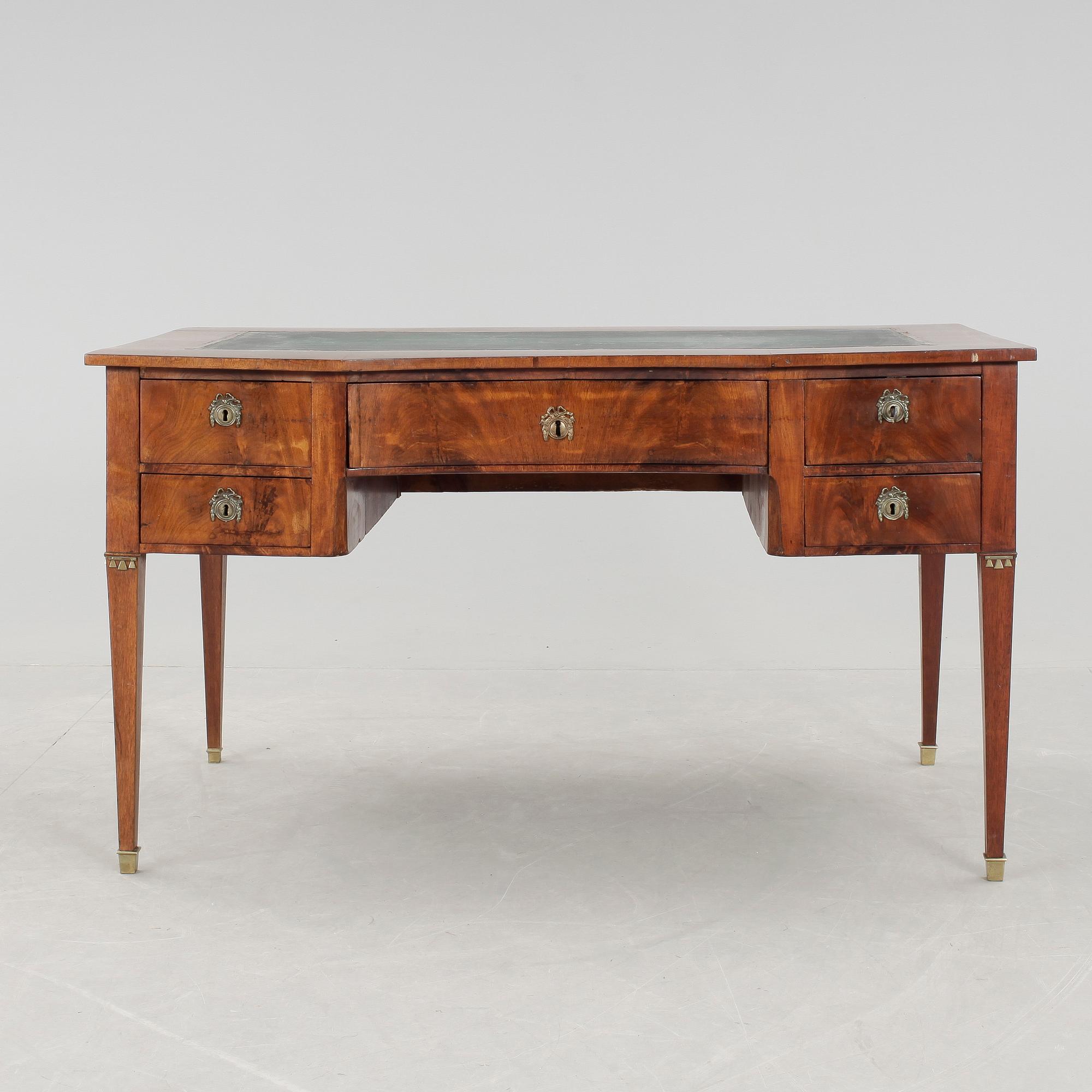Gustaviansk
SKRIVBORD, sengustavianskt, 1800-talets första hälft.
Mahogny. Svängt framstycke med 5 lådor och mässingsbeslag. Skiva med guldpräglad läderklädsel, dekor i mässing, samt nedåt avsmalnande ben med mässingskodda avslut. Bredd 134, djup 72,5, höjd 77 cm. Nyckel finns.
Lagningar. Nyckel fungerar ej i mittersta låda. Skador i fanér. Träbortfall.
Designer
The Gustavian era fell between 1775 and 1810. The furniture then takes on, in contrast to Rococo, a more restrained contour. The legs become straighter and tapered, the colours become softer in mostly grey-green and grey-blue tones. Typical to the Gustavian time is intarsia, inlays with medallions and classical borders. The chairs backrests are often straight spindles or a curved bundle of spindles, with the finer chairs have a padded back with a rosebud decoration at the top. A significant detail is the flower, "fleuron", which is often found in corner ornaments, leaf scroll decoration, and festoons of leaves, flowers, or fruits. Between the years of 1785-1810 is commonly known as the late-gustavian era and is known for its rigid clacissism. Rich intarsia decoration was replaced by smooth, dark mahogany with elegant brass fittings and moldings.
Read more







































